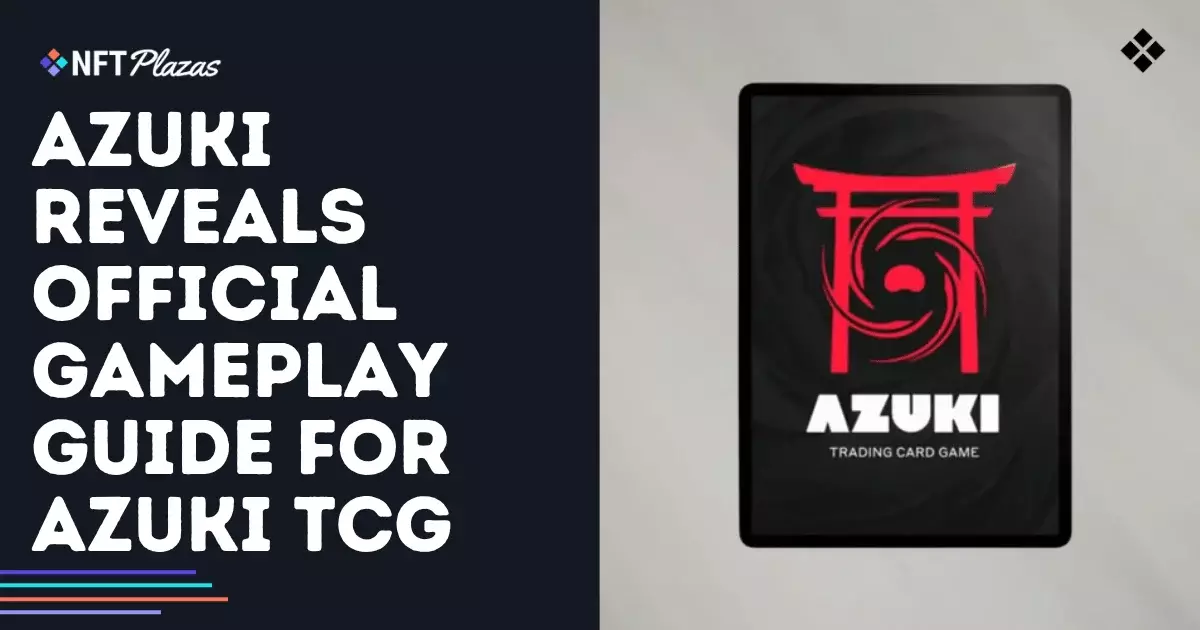The announcement of Azuki’s upcoming trading card game (TCG) has stirred significant debate among enthusiasts and skeptics alike. While the creators present it as a strategic evolution within their blockchain-centric universe, many are questioning whether this move is a genuine innovation or simply a calculated attempt to capitalize further on the NFT hype. As a blend of digital art, anime influences, and the allure of blockchain, the Azuki TCG is positioned to carve out its niche. But will it live up to expectations, or is it destined to falter under the weight of inflated promises and overhyped mechanics?
The decision to release an official gameplay guide before the game’s launch indicates a strategic approach. However, it also exposes the underbelly of the project: transparency, or the lack thereof concerning blockchain integration. Unlike traditional TCGs, Azuki’s game relies heavily on its narrative of blockchain freshness. Yet, the guide explicitly excludes any current mention of digital asset or token integration, raising questions about whether this is merely a superficial veneer over a conventional game with a trendy NFT wrapping.
<…>
The Game Mechanics: Innovative or Just Another Clone?
From the detailed descriptions in the guide, it’s clear that Azuki TCG aims to introduce layered mechanics—factions, resource management through IKZ cards, and strategic movement across two rows of play. Structurally, it draws from established trading card paradigms: turn-based combat, resource expenditure, and a variety of card types. But here’s the rub—does this complexity add worth, or is it merely a rehash dressed up in an artfully crafted anime aesthetic?
The game appears to prioritize strategic depth, yet it seems to underserve the core question of whether blockchain elements truly augment gameplay or simply serve as a marketing ploy. The differentiation seems superficial—what’s marketed as innovation feels more like a repurposing of classic mechanics with a glossy new coat. The real concern is whether these mechanics can captivate players beyond the initial novelty or if they will become tedious after the hype wears off.
<…>
Market Impact and the Blockchain Narrative
Azuki’s decision to develop a TCG within its ecosystem could be a savvy move—or a strategic misstep. The gaming community remains wary of blockchain projects that overpromise and underdeliver, especially when digital assets and tokens are not yet integrated into gameplay. The focus on NFTs and digital collectibles has been met with skepticism due to their volatility and lack of tangible value outside hype bubbles.
Furthermore, the announced in-person tournament signals an eagerness to standardize competitive play, but it also risks exposing the project’s vulnerabilities. If the game fails to ignite genuine excitement or prove its lasting appeal, the entire Azuki ecosystem might suffer reputational damage. On the other hand, if it manages to blend gameplay with blockchain utility eventually, it could set a precedent for other brands to follow—albeit with a disclaimer that success is far from assured.
<…>
While Azuki’s TCG project exhibits ambitions to redefine how blockchain and gaming intersect, it’s riddled with uncertainties. The game’s mechanics are sound, yet they don’t venture far enough from conventional models to justify the hype. The primary allure lies in the branding—an anime-inspired, blockchain-native universe attempting to position itself at the forefront of competitive TCGs. Still, the lingering question remains: will it stand the test of time, or will it dissolve into the sea of overhyped NFT ventures that eventually fade away?
As a center-right liberal, I hold the view that technological innovation must ultimately serve the consumer—not just corporate interests or investor speculation. If Azuki’s game can evolve beyond its superficial blockchain veneer and genuinely deliver engaging gameplay with real utility, then perhaps it can carve out a lasting identity. Until then, it remains a gamble—promising a revolution but risking becoming just another fleeting craze.














